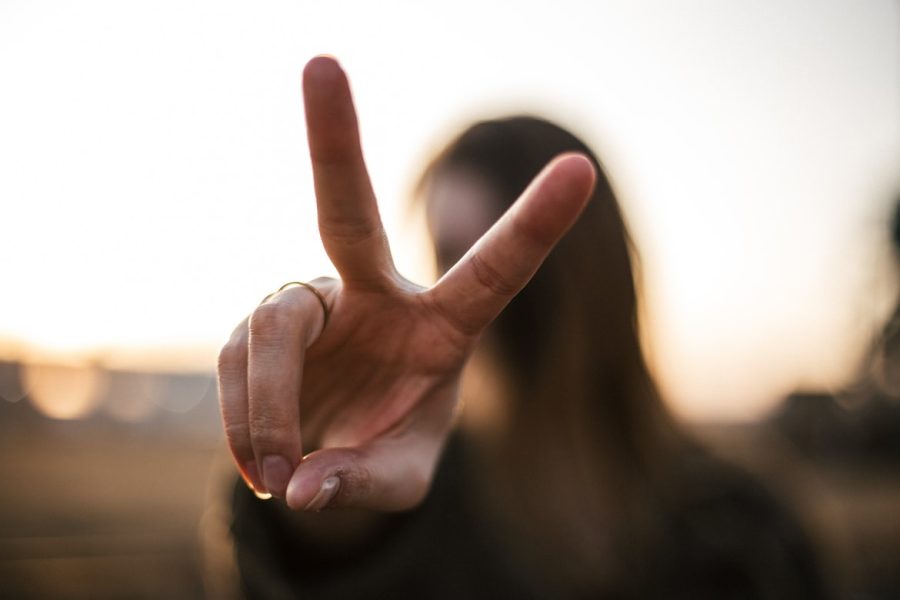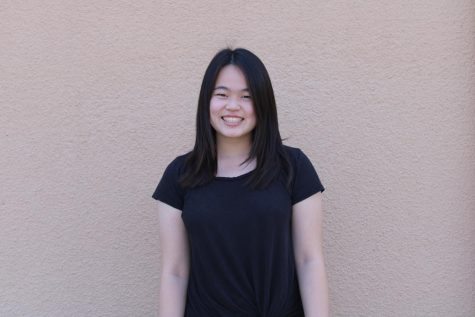What the Way You Perceive Two Fingers Held Up Says About You
Veronica Kuo explores the various types of peace signs and what they mean.
February 15, 2022
While scrolling through your Instagram feed, you often may see a person holding up their index and middle fingers with their palm facing away from themselves. This hand formation describes:
A. The Number Two
B. The Letter V
C. Scissor (most commonly used when playing the game: Rock-Paper-Scissors)
D. Victory
E. “Peace” or friend
AB. Nothing, but it’s used to make one’s face smaller and/or cuter in photos
A: THE NUMBER TWO
If you chose the number two, you are American! Believe it or not, the way you count gives away your nationality. According to the BBC, there is a disparity between how people count on their fingers around the world. Europeans likely start with their thumb and end with their pinky, Americans begin with their pointer finger, people from the Middle East likely start from their pinky, and Japanese people may start with all fingers out and close as they count.
B: THE LETTER V
If you chose the letter V, either your name starts with the letter V (so you have an unhealthy obsession with it), or you know American Sign Language. According to data taken from the United States’ 2000 Census, if your first name starts with the letter V and you are female, around 2 in 100 females have the same initial as you, and if you are male with the first initial V, around 6 in 1000 males have the same first initial as you, so hold up that letter V with pride!
University High School has its very own American Sign Language (ASL) classes and ASL is super vital for us to communicate with those who are Deaf or Hard of Hearing (DHH). ASL is often associated with our DHH Community, but did you know that only around 1% of Americans with hearing loss or difficulties use ASL? This piece of data adds to the importance of captioning all our UNIvisions as well as awareness in how we communicate with one another.
C: SCISSOR (most commonly used when playing the game, Rock-Paper-Scissors)
If you chose scissor, you are a child at heart, but also very manipulative. While many people consider Rock-Paper-Scissors to be a game of chance, it actually is a game of psychology. As explained in Psychology Today’s article titled, “The Surprising Psychology of Rock-Paper-Scissors,” there are nine keys to winning a simple game of Rock-Paper-Scissors. Some keys are repetition, knowing that rookies typically choose rock, and making connections between your opponent and the symbols of each hand formation: rock corresponds to aggression and is used when other hand formations seem to yield a losing hand, paper is likely used as a subtle attack as it corresponds to peace, and scissors corresponds to controlled aggression and likely used when the other player is confident or as a winning shot.
D and E: VICTORY or PEACE
If you chose victory or peace, you are a boomer. During World War II, the hand formation was adopted by the Allies as a symbol of Victory. Later, anti-war activists adopted the sign to mean “Peace.” Either way, you’re old school, and that isn’t something you should shy away from!
AB: NOTHING, BUT IT’S USED TO MAKE ONE’S FACE SMALLER AND/OR CUTER IN PHOTOS
If you chose that while there is no symbolism to the hand formation, it is often used in photos to make the face smaller or appear cuter, you are East Asian (at heart)! According to Time, the history of how the hand formation became mainstream in East Asia, especially in Japan, China, and Taiwan has a few different roots. Some may trace it back to American figure skater Janet Lynn, who threw up the hand sign with a big smile on her face after taking a fall, losing her prospective gold medal in the 1972 Olympics in Japan. Others may trace it to the use of the sign as “Victory” in manga. However, most may agree that what brought the hand sign to limelight in East Asia was popular Japanese singer, Jun Inoue, who frequently used the hand formation during his time as a spokesperson for Konica cameras, and secured the perception of the sign as kawaii.





